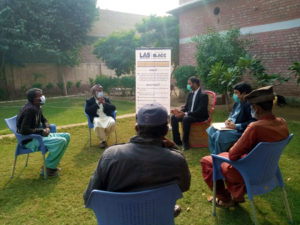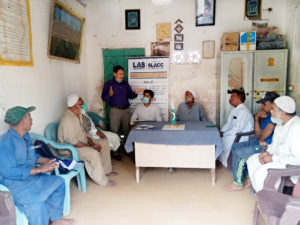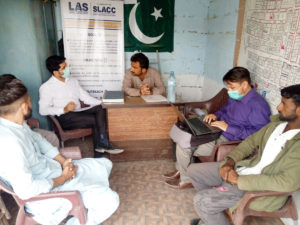Mediation Center
Mediation is a flexible, non-binding dispute resolution process during which a neutral third party (mediator) assists two or more disputants to reach a voluntary, negotiated settlement of their differences. The parties have ultimate control of the decision to settle and the terms of resolution.
The resolution of disputes through informal mediation has an impressive tradition in Pakistan (via the Jirgah system), as it does in many Southeast Asian nations. However, those days are now long gone, when community disputes were often resolved amicably through the intervention of community leaders and elders.
Mediation is particularly suited to many traditional Asian cultures, where concepts of social order, harmony, and honor are all vastly regarded.
How do we contribute?
In line with the Legal Aid Society’s commitment to connecting disempowered end-users of justice with expedient services for the delivery of justice, The Mediation Centre (TMC) provides free-of-cost mediation services to a proportionate number of vulnerable and disenfranchised individuals.
TMC functions as a private mediation center, where cases are referred for mediation either by the respective courts of the locality, or from the out-of-the-court (independent) bodies.
How does TMC help to accelerate access to justice?
It is a widely accepted fact that in Pakistan, the judicial system is slow-moving. Judges are overloaded with cases and this ultimately leads to a delay in justice for the most vulnerable and downtrodden members of our society who need swift and effective justice the most.
In such a situation The Mediation Centre shall contribute significantly toward an increase in access to justice by allowing cases from both inside and outside of the court/justice system, especially when the justice system is overwhelmed with numerous delays resulting in a lack of access to justice for all, leaving many groups deprived of justice – (including women & children) vulnerable.
Objectives:
TMC achieves objectives of mediations such as:
- Reduce court backlogs;
- Increased in-court settlements (facilitated by judges);
- Bring about an improvement in civil procedure and legal culture;
- Reduced formality and complexity of the existing processes;
- Make case studies available for judges for some elements of case management;
- Build a better rapport for the dispute resolution culture, and avert the hostile mindset within courts;
- Creation of a model for further court reform.
- Create perceptions that mediation is a part of the court/justice system and litigation process; and
- Increase access to justice in terms of places where there are limited courts by geographical locations (unless cases can be referred to other cities/venues).






